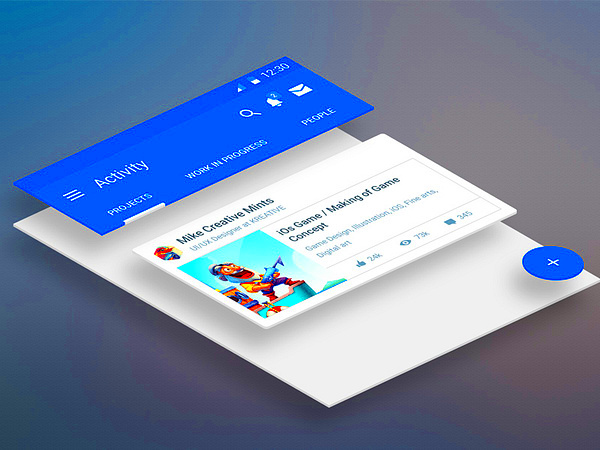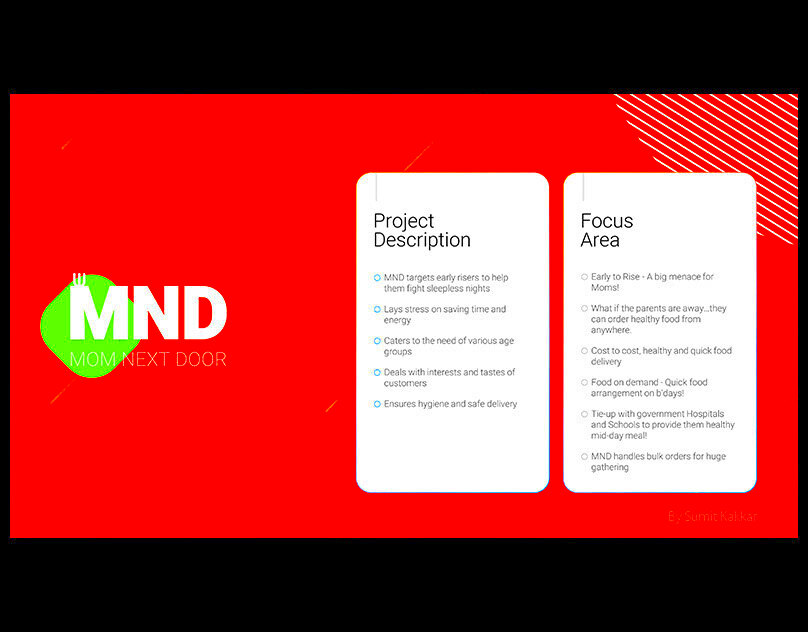Behance is a platform where creative professionals showcase their work, connect with others, and find opportunities. It’s not just a portfolio site; it’s a community of artists, designers, and creators from all over the world. If you're looking to share your case studies, Behance offers a unique chance to reach a broader audience.
Why is Behance important for creatives? Here are a few reasons:
- Visibility: Your work can be seen by potential clients, collaborators, and employers.
- Networking: Connect with other creatives and expand your professional network.
- Feedback: Gain insights and constructive criticism from the community.
- Opportunities: Discover job openings and freelance gigs tailored to your skills.
In short, showcasing your case studies on Behance can significantly enhance your professional presence and open up new avenues for your career.
Preparing Your Case Study for Upload

Before you hit that upload button, it’s essential to prepare your case study properly. A well-prepared case study showcases your skills and tells a compelling story. Here are some key elements to consider:
- Choose a Relevant Project: Select a project that highlights your best work and aligns with your target audience.
- Outline Your Process: Break down the steps you took, from research to execution.
- Gather Visuals: Collect high-quality images, videos, and other visuals that support your narrative.
- Write Clear Descriptions: Explain your role, challenges faced, and solutions you implemented.
Creating a compelling narrative is vital. Your audience wants to understand not just what you did but how you did it. Aim for clarity and engagement in your writing.
Also Read This: Canva High Resolution Image Creation
Steps to Upload Your Case Study on Behance

Now that you’ve prepared your case study, let’s walk through the steps to upload it on Behance:
- Log into Your Behance Account: If you don’t have one, you can easily sign up.
- Click on the “Create a Project” Button: This will take you to the project upload page.
- Add Your Visuals: Drag and drop your images, videos, or other files into the upload area.
- Write a Title and Description: Use a catchy title and provide an engaging description of your case study.
- Organize Your Content: Arrange your visuals and text in a way that flows logically. You can also use features like columns and sections.
- Add Tags: Include relevant tags to help users find your project.
- Publish Your Project: Review everything one last time and hit the publish button!
Congratulations! You’ve successfully uploaded your case study on Behance. Remember, it’s just as important to share and promote your project after uploading it.
Also Read This: Fortiguard Downloader for FortiGate Users
Best Practices for Case Studies on Behance
Creating a standout case study on Behance involves more than just uploading images and writing descriptions. To really shine, follow these best practices. They will help your work not only catch the eye of viewers but also convey your skills and thought process effectively.
- Use High-Quality Images: Visuals are key. Make sure your images are clear, professional, and well-lit. This can significantly impact how your work is perceived.
- Tell a Story: Your case study should have a beginning, middle, and end. Start with the problem, discuss your approach, and finish with the results.
- Be Concise: Avoid long paragraphs. Use bullet points and headings to break up the text. This makes it easier for viewers to scan your work.
- Show Your Process: Include sketches, drafts, or stages of development to illustrate how you arrived at the final result.
- Engage with the Community: Respond to comments and feedback. This interaction can create opportunities for networking and collaboration.
- Regularly Update Your Projects: Don’t let your projects sit stagnant. Update them with new information or improvements as your skills evolve.
By following these best practices, you can create case studies that not only showcase your talent but also resonate with your audience.
Also Read This: Canva Text Filling with Image
How to Enhance Visibility of Your Case Study
Once you’ve uploaded your case study, the next step is to ensure it reaches a broad audience. Here are some effective strategies to enhance its visibility:
- Optimize Your Tags: Use relevant keywords and tags that reflect your work. This helps people searching for specific terms find your case study.
- Share on Social Media: Promote your project on platforms like Instagram, Twitter, and LinkedIn. Use engaging captions and visuals to attract attention.
- Engage with Other Users: Like and comment on other projects. This can increase your visibility in the Behance community.
- Join Groups: Participate in Behance groups related to your field. Sharing your work in these communities can attract interested viewers.
- Collaborate with Others: Partner with other creatives for joint projects. This can help you tap into each other's audiences.
- Update Your Profile: Ensure your profile is complete and reflects your style. A professional profile can encourage users to check out your work.
By implementing these strategies, you can significantly increase the visibility of your case studies on Behance, reaching more people who appreciate your work.
Also Read This: Creating Eye-Catching Ads Using 123RF Images
Common Mistakes to Avoid When Uploading
Even seasoned creators can make mistakes when uploading case studies. By being aware of common pitfalls, you can ensure your project stands out for the right reasons. Here are some mistakes to avoid:
- Skipping the Proofreading: Typos and grammatical errors can hurt your credibility. Always proofread your content before publishing.
- Overloading with Text: Avoid writing long paragraphs. It’s essential to be clear and concise.
- Ignoring Image Quality: Low-resolution images can make your work look unprofessional. Always use high-quality visuals.
- Neglecting Tags and Categories: Failing to use tags means you might miss out on potential views. Be sure to categorize your project correctly.
- Not Engaging with Comments: If viewers take the time to comment, engage with them! Ignoring feedback can make you seem unapproachable.
- Failing to Promote: Just uploading your work isn’t enough. Actively share your project to maximize its reach.
Avoiding these common mistakes will help you create a polished and professional case study that resonates with viewers on Behance.
Also Read This: Changing Behance language settings
Getting Feedback on Your Case Study
Once you've uploaded your case study on Behance, seeking feedback is a crucial step. Feedback helps you understand how your work is perceived and where you can improve. It can also lead to new opportunities and connections. Here are some effective ways to gather feedback:
- Encourage Comments: In your project description, invite viewers to share their thoughts. A simple request for feedback can encourage interaction.
- Reach Out to Peers: Share your case study with fellow creatives or mentors. Their insights can be invaluable in refining your work.
- Join Online Communities: Participate in design forums or social media groups related to your field. Sharing your work there can lead to constructive critiques.
- Use Surveys: Create a short survey asking specific questions about your case study. This can help you gather focused feedback.
- Be Open to Criticism: Remember that not all feedback will be positive. Embrace constructive criticism as a chance to grow and improve your skills.
Feedback can be a powerful tool for your development as a creative professional. Use it wisely to enhance your future projects and build a stronger portfolio.
Also Read This: How Much Money Can You Earn from 20000 YouTube Views
FAQ About Uploading Case Studies on Behance
When uploading case studies on Behance, you might have some questions. Here are answers to common queries:
- How long can my case study be?
There’s no strict limit, but aim for clarity and conciseness. Quality over quantity is key! - Can I edit my case study after publishing?
Yes! You can edit your project anytime to update visuals, text, or tags. - What types of files can I upload?
You can upload images, videos, and PDFs. Make sure they are high-quality for the best presentation. - Is there a limit on the number of projects I can upload?
No, you can upload as many projects as you like. Just ensure each one is well thought out. - How can I get my project featured?
Engage with the community, keep your work high-quality, and follow Behance’s guidelines to increase your chances of being featured.
These FAQs should help clarify any doubts you have about uploading your case studies on Behance.
Conclusion and Final Thoughts
Uploading a case study on Behance is an exciting opportunity to showcase your work and connect with others in the creative field. By understanding the platform, preparing your project carefully, and following best practices, you can create impactful case studies that stand out. Don't forget to seek feedback, promote your work, and engage with the community to maximize your presence.
Remember, every project you share is a step toward growth. Take the time to learn from each upload, and continuously improve your skills and portfolio. With persistence and creativity, you'll not only attract attention on Behance but also build meaningful connections that can enhance your career.
So, go ahead and share your case studies confidently. The world is eager to see your creative journey!
